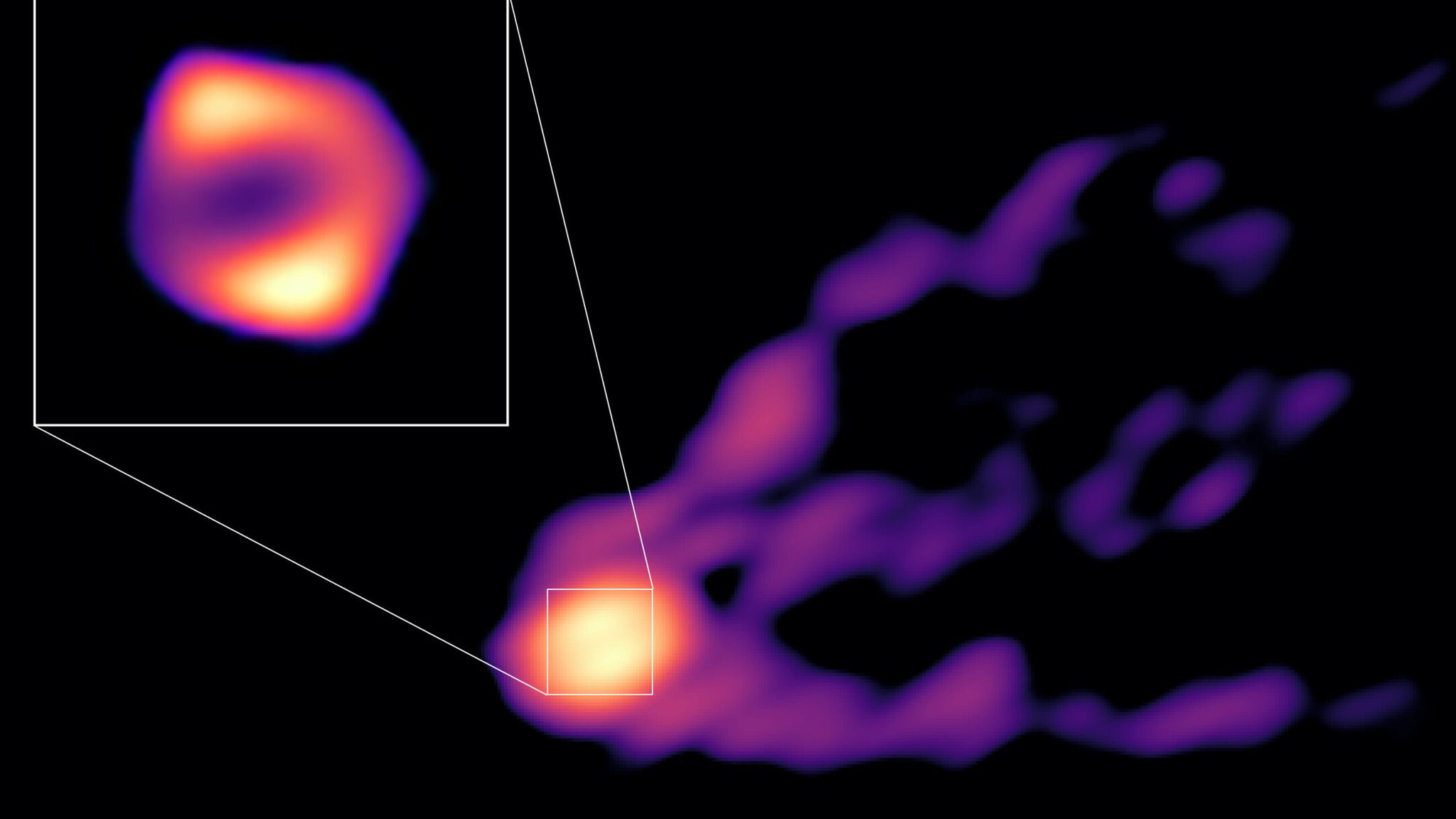Astronomers reveal new insights into the mysterious galactic phenomenon of supermassive black holes emitting jets.
In an astounding feat of scientific discovery, a black hole has been photographed for the first time expelling a powerful jet, emanating from a glowing circle at the centre of Messier 87 (M87) galaxy, a staggering 55 million light-years from Earth.
To put the distance into perspective, a light-year is the distance light travels in a year, measuring 5.9 trillion miles (9.5 trillion kilometres). The image is a significant achievement in space exploration and reveals a large, radiant jet connected to the matter swirling around the black hole.
This breakthrough was made possible by data gathered from over a dozen telescopes across the globe. By piecing together this data, the scientists were able to create an image of the black hole and the jet, completing the picture of the region around it, as explained by Jae-Young Kim, from the Kyungpook National University in South Korea and the Max Planck Institute for Radio Astronomy in Germany to Sky News.
The M87 black hole is a supermassive entity, with a mass 6.5 billion times greater than that of our sun and more expansive and brighter than our Milky Way. Four years ago, it was first captured as a blurry, fiery doughnut-shaped object.
Now, with data from 14 telescopes located as far apart as Greenland and Chile, astronomers have produced a new image of the M87 black hole, revealing the powerful jet emerging from its shadow, the dark region encircled by the bright light ring.
This discovery opens new doors for studying black holes and further understanding their behaviour. It is an unprecedented step forward in our knowledge of space, and the implications are immense.
This incredible feat is a testament to the power of collaboration among scientists across the world, pooling their resources to achieve something that has never been done before.
Black holes have long been an enigma in space exploration, known for their strong gravitational pull that sucks in everything, even light. Now, researchers have captured an image of a supermassive black hole emitting a powerful jet.
The image was obtained using radio light emitted at a longer wavelength, which made the jet visible, according to the European Southern Observatory.
Thomas Krichbaum, of the Max Planck Institute for Radio Astronomy, explained that at this wavelength, scientists can see how the jet emerges from the ring of emission surrounding the central supermassive black hole.
This discovery raises more questions about how these black holes emit such powerful jets, which remains one of the most mysterious features of galaxies.
The team plans to continue observing the region around the black hole at the centre of M87 at different radio wavelengths to further study the emission of the jet.
“We plan to observe the region around the black hole at the centre of M87 at different radio wavelengths to further study the emission of the jet,” Eduardo Ros, from the Max Planck Institute for Radio Astronomy, told the UK-based news organisation.
“Such simultaneous observations would allow the team to disentangle the complicated processes that happen near the supermassive black hole.
The observations are published in the journal Nature, and the researchers are hopeful that this discovery will lead to a better understanding of the mysterious regions of the Universe.
With further study, we could learn more about how black holes and their jets function, opening new avenues for space exploration and discovery.







